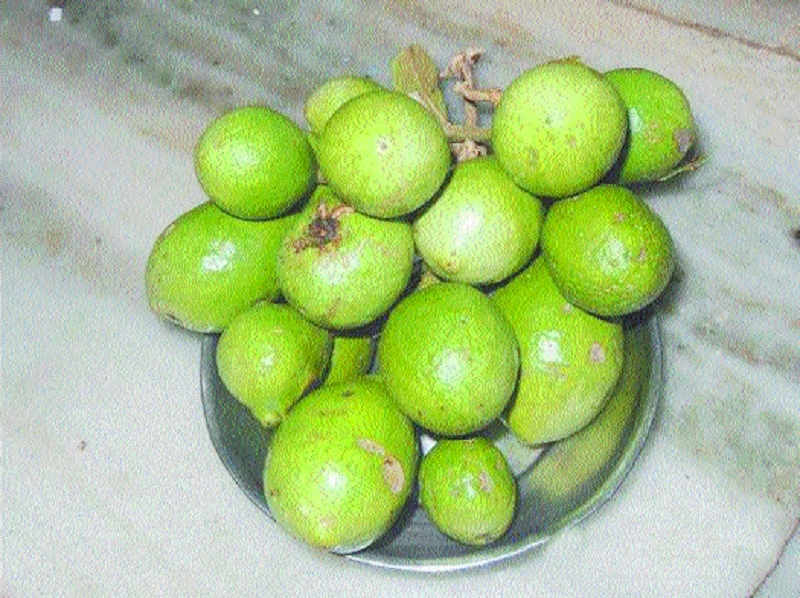Vaghate: The natural antidote against snake-bite
| Date :20-Sep-2019 |

By Rajendra Diwe :
According to Hindu calendar, the four month period including months like Ashadh, to Kartik has been considered as ‘Chaturmas’. It is believed during these months, God Vishnu goes to divine sleep on Ekadashi, the 11th day of Shukla Paksha, bright moon day in Ashadh. Thus, this day is termed as Devashayani Ekadashi. In the month of Kartik on the 11th day of Shukla Paksha, it is believed Lord Vishnu awakes. This day of Kartiki Ekadashi is termed as Prabodhini Ekadashi. Lord Vishnu is considered as a protector. The period when Lord Vishnu takes rest is the period of number of diseases, rainy season, natural calamities like flood etc.
During this period, ‘Nature comes to an Action’ and decides to protect human beings from diseases. This is the period when number of wild vegetables is seen in market. On the day of Ashadhi Ekadashi each year, people find some green coloured ovoid berry shaped fruits identical guava in market. On Ashadhi Ekadashi, there is a tradition to worship Lord Vitthal or Vishnu by offering these fruits in some parts of Maharashtra particularly in rural areas. This may be the reason, this fruit is termed as ‘Govindphal’ means Lord Vishnu is fond of this fruit. On dwasashi, that is next day of Ashadhi Ekadashi, there is a tradition to prepare vegetable of this fruit, offer to God and then eat.
It is a belief in rural area, once a person eats this fruit on Dwadashi, he will not get any disease in rainy season. In some parts of Maharashtra, this fruit is being offered to Lord Shiva on the day of Mahashivratri to get his blessings. In Vidarbha region, this fruit is known as Vaghate. This fruit is only seen in market on Ashadhi Ekadashi day. In Sanskrit it is known as Karambh, Vyaghra Nakhi or Tapaspriya. Botanically, it is the fruit of climber Capparis Zeylanica L. family Capparaceae. The fruit is 4.5 cm long and 3.5 cm wide, green turning reddish-coloured when ripe.
The fruit contains numerous seeds. This fruit is popular in rural areas of different states with different names like Vaghati, Orkali, Gobindaphal (Assam), Kalokera (Bengali), Ceylon Caper (English), Kakhbilado, Govindkal or Karrallura (Gujarati) Aradana or Jhiris (Hindi), Kevisi Kodi (Irula), Mullukatari (Kannada), Vaghamti (Konkani), Elippayar or Karthotti or Gitoran (Malayalam), Kaduvaghanti, Govindi or Vaghanti (Marathi), Govind-phal, Karwila, Garna (Punjab), Kaatu Thotti, Ban Kera, Wagati, Arudonda (Telugu). The root and leaves of Capparis Zeylanica are widely used in the indigenous system of medicine. In Indian traditional systems of medicine, it is considered as an important remedy for the treatment of several diseases. Fruits are used as antidote against the snake bite. Traditionally, the juice of fresh fruit is dropped into the ear to kill worms. It is very useful in ear disease. It acts as stomachic and sedative. It is useful in severe headache, cough, cold, nasal congestion and throat infection. The leaves, unripe fruits, roots and root bark of this plant are used as medicine.